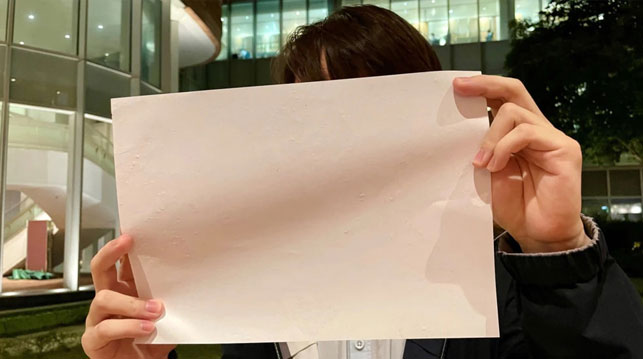
The single biggest time waster in writing is staring at the blank page.
I’m not talking about writer’s block. I’m talking about trying to write that first sentence for your essay, struggling to figure out what you want to say and how to say it at the same time. That’s not writer’s block; that’s a brain logjam.
The “inverted triangle” and free writing will get words on the page, but they’re probably going to be junk you will either delete later or turn in for a D+. An essay isn’t just a bunch of words.
The only real solution is to recognize that you’re approaching that blank page the wrong way. Trying to figure out everything at once and shove it all into a sentence is impossible, like trying to eat a sandwich you haven’t actually made yet.
Get a free sample proofread and edit for your document.
Two professional proofreaders will proofread and edit your document.
That’s where the outline comes in. You focus on the first task first and all by itself: what to say. Don’t worry about the words yet. Don’t even think about complete sentences. This is only about lining up your content.
The best part? Writing an outline uses a template, which means never starting with a blank page ever again.
Here’s your basic template for a four-paragraph essay:
That’s an intro (which you will write last), two paragraphs for the body of the paper, and a conclusion. Skip even outlining the intro for now. Look at the body. That’s where the paper really lives and works.
So, looking at the template, we know we need to have two basic ideas for this paper, one for II-A and one for III-A.
Two ideas. That’s what we’re concentrating on before anything else. (And remember that it’s the content of your essay that determines the grade, not the loveliness of your prose.)
If you’ve got your two ideas ready to go, great. If you haven’t got your two ideas ready, then it’s time to do the research or talk about it with your instructor or your friends or your houseplant until you have figured out your two ideas.
And remember, these need to be ideas, not topics. “Fruit” is not an idea. Neither is, “I like bananas.” An idea about bananas would be, “Bananas are usually considered sweet, but they work well in succulent dishes too.” (In the outline, this could read: “bananas sweet/good for meat/chicken cooking.”)
Plug your ideas into the template. Look at them. Are they in the right order, or should you switch them around?
Now look at the paragraph template for each idea. Start coming up with your examples and explanations for those ideas (no sentences, just the words that tell you what you want to say). Figure out what ground you need to cover to make your ideas complete.
You will find the template of your outline will encourage you to stay focused on your ideas and on what you need to say about those ideas, but don’t forget that the template is adaptable. If one of your ideas gets too big for one paragraph, stick another body paragraph template in there. Add in more examples and explanation as needed as well.
Once you’ve reached the stage where your body paragraphs are mapped out, you now have your thesis statement. Plug the list of your ideas in order in I-D. Look at that list of ideas. What will the instructor need to know to understand what those ideas mean? Jot down that information in I-B and I-C.
Now drop down to the conclusion. Is your essay long and/or complicated enough that you need to repeat your ideas? If not, skip IV-A. Think about what you might say for IV-B. For a basic essay, a one-sentence conclusion is often just fine.
Now go all the way back up to I-A. Your topic sentence should be as narrow as possible while covering the entire essay. What key words do you want to use? Plug them in. Your thesis statement is simply a summary of the points in your body paragraphs stated in the same order.
And now, look! You have an outline that lists everything you want to say in the order in which you want to say it. Blank page, take that!
Look over your outline. Which body paragraph do you want to write first? Use the outline to guide you sentence by sentence.
Once you have the body written, then you write the conclusion and, finally, the intro. Now that first sentence of the paper is easy because you know what you want to say—in fact, you’ve already said it.
Julia H.
Get a free sample proofread and edit for your document.
Two professional proofreaders will proofread and edit your document.
Get a free sample proofread and edit for your document.
Two professional proofreaders will proofread and edit your document.
We will get your free sample back in three to six hours!